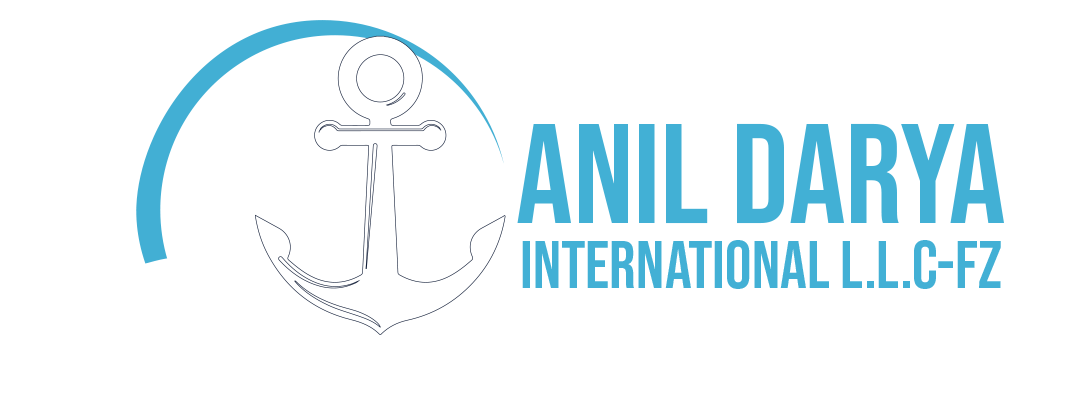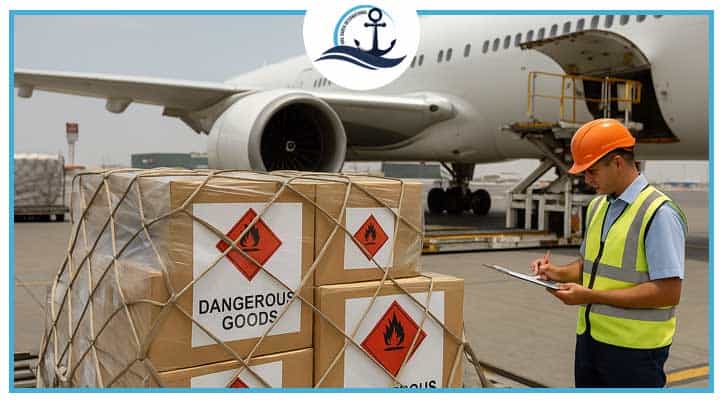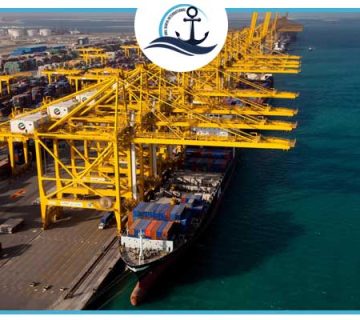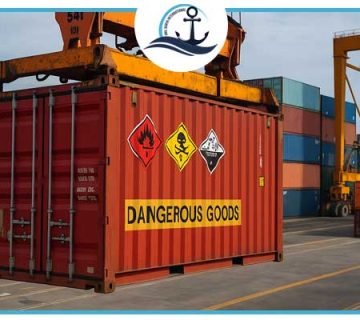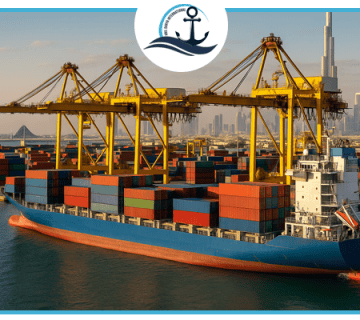|
Getting your Trinity Audio player ready...
|
Safety and Compliance in Transporting Hazardous Goods by Air from the UAE
Air freight has become one of the most reliable methods for global cargo movement — especially when time, precision, and security are crucial. In the UAE, where aviation and logistics standards are among the highest worldwide, transporting dangerous goods (DG) by air demands strict adherence to safety and regulatory frameworks.
A single error in labeling, packaging, or documentation can lead to serious legal, financial, or safety consequences. That’s why specialized freight forwarders like Anil Darya Shipping play a critical role in ensuring that every UAE air freight DG consignment is fully compliant and handled with precision.
Understanding Dangerous Goods and UAE Regulations
Dangerous goods refer to substances or materials that can pose risks to health, property, or the environment during transport. The International Air Transport Association (IATA) defines these goods through its Dangerous Goods Regulations (DGR), which categorize them into nine hazard classes, from explosives and flammable liquids to toxic and radioactive materials.
In the UAE, the General Civil Aviation Authority (GCAA) and Dubai Civil Aviation Authority (DCAA) enforce these regulations for all air freight operations through Dubai International (DXB) and Al Maktoum International (DWC). Every DG shipment must follow these regulations for classification, labeling, and packaging before being accepted by airlines.
Anil Darya Shipping, headquartered in Dubai, ensures full compliance at every stage. The company’s DG-certified team verifies classification, prepares IATA-approved documentation, and coordinates directly with airline safety officers for final acceptance.
The Compliance Chain: From Classification to Delivery
Transporting hazardous materials by air involves a tightly controlled compliance chain designed to protect people, aircraft, and property. Each step must align with international and UAE-specific guidelines:

1- Classification and Identification
The first step is identifying the exact hazard class and UN number. For example, lithium batteries are categorized as Class 9 (Miscellaneous Dangerous Goods) under UN3480/3481. This determines the type of packaging, label, and documentation required.
2- Packaging and Labeling
DG packaging must meet UN performance standards. Containers must display the correct hazard labels, orientation arrows, and handling marks. Failure to label properly is one of the most common causes of shipment rejection.
(For an in-depth look at labeling and documentation, see Packing & Labeling Dangerous Goods for Dubai Air Freight.)
3- Documentation and Declaration
Each shipment must include a Shipper’s Declaration for Dangerous Goods (DGD), an Air Waybill (AWB), and a Safety Data Sheet (SDS). Anil Darya Shipping verifies every detail before submission to avoid customs delays or fines.
4- Storage and Handling
Dangerous goods must be stored in separate DG-approved areas at airports, with ventilation, temperature control, and fire protection systems. Dubai’s airports offer world-class DG terminals that comply with ICAO Annex 18 safety requirements.
5- Transport and Tracking
Real-time cargo tracking, especially for temperature-sensitive or high-risk cargo, is now standard. IoT-based monitoring devices ensure that DG shipments remain within safe parameters — a trend highlighted in How Technology & IoT Are Transforming Freight Tracking in Dubai Logistics.
Recent Regulatory Updates: IATA DGR 2025 and UAE Compliance Enhancements
The IATA DGR is updated annually to reflect new safety practices. The 2025 edition introduces several key changes impacting UAE exporters and forwarders:
- Revised lithium battery packaging standards under PI965 and PI968, limiting state of charge and overpack requirements.
- New packaging instructions for corrosives and toxic substances to align with ICAO standards.
- Enhanced training guidelines emphasizing competency-based programs (CBTA).
- Mandatory use of digital DGD submission for certain airlines operating in Dubai.
Anil Darya Shipping continuously updates its compliance processes and staff certifications according to the latest DGR amendments. This ensures every shipment remains aligned with current global safety standards.
Common Mistakes in DG Air Freight — and How to Avoid Them
Even experienced shippers sometimes make avoidable errors that can delay or endanger shipments. Common issues include:
The best way to avoid these issues is to work with a certified and experienced forwarder. Anil Darya Shipping provides a pre-audit of every DG file, ensuring all documentation and packaging comply with both IATA DGR and UAE Civil Aviation requirements before cargo acceptance.
Case Study: Lithium Battery Shipment from Dubai to Germany
In 2025, Anil Darya Shipping successfully managed a time-sensitive shipment of lithium-ion batteries (Class 9 DG) from Dubai to Frankfurt for a European electronics distributor.
The client faced tight delivery deadlines and complex export controls due to recent IATA changes. The Anil Darya team performed a full compliance review — verifying UN packaging, ensuring each box contained the correct Lithium Battery Mark, and coordinating with the airline’s DG officer for pre-approval.
Upon arrival in Germany, the cargo cleared customs within hours, with no hold or inspection delays. The client later confirmed that the shipment met all DGR and GCAA standards, praising Anil Darya’s transparent communication and 24/7 tracking updates.
This case illustrates how expert coordination and knowledge of DG compliance can turn a potentially risky shipment into a smooth, on-time delivery — reinforcing the company’s reputation for Dubai cargo safety and reliability.
Integrating Air, Sea, and Land for Dangerous Goods Logistics
Although air freight is the fastest and most regulated mode for DG, many shipments also require multimodal integration. Anil Darya Shipping offers door-to-door solutions from Dubai, combining air, sea, and land transport under a unified compliance framework.
For example:
- Sea + Air combinations are often used for cost efficiency. Bulk chemicals can move by sea to Dubai, then be repacked and shipped by air to final destinations in Asia or Europe.
- Land + Air routing helps connect free zones like JAFZA and DAFZA, simplifying re-export procedures for DG cargo.
By leveraging multimodal solutions, clients benefit from flexibility, reduced transit times, and fully traceable cargo movements across all modes.
(Related read: Door-to-Door Freight Solutions from Dubai: Combining Sea, Air, and Land.)
Training, Certification, and Continuous Safety Culture
Compliance doesn’t end with documentation. It requires constant training and awareness. IATA mandates that all DG personnel complete recurrent certification every 24 months.
At Anil Darya Shipping, every DG staff member holds Category 6 IATA certification, covering classification, packing, labeling, documentation, and emergency response.
The company’s internal policy goes beyond minimum requirements — conducting quarterly workshops on UAE DG Code of Practice and emergency containment procedures.
This culture of continuous training ensures the highest levels of operational safety and compliance across all shipments.
Challenges in DG Air Freight and How Anil Darya Overcomes Them
Shipping hazardous goods by air in or out of Dubai presents unique challenges:
- Rapidly changing global regulations
- Different acceptance policies between airlines
- Varying temperature requirements for chemical cargo
- Restrictions on transshipment through specific countries
Anil Darya international L.L.C-FZ mitigates these risks through proactive coordination, constant communication with airline DG departments, and advanced digital documentation systems. Each shipment is tracked from warehouse to final destination, ensuring transparency and minimizing disruptions.
Why Choose Anil Darya Shipping
With deep operational experience, compliance expertise, and partnerships with leading airlines, Anil Darya Shipping stands among the UAE’s most trusted specialists in dangerous goods logistics.
The company offers:
- IATA-verified DG management and documentation
- End-to-end visibility and real-time cargo tracking
- Multimodal solutions across air, sea, and land
- Expertise in bulk, break-bulk, and special cargo
- 24/7 customer support and transparent pricing
Whether you’re exporting chemicals, batteries, or specialized equipment, Anil Darya ensures full compliance and peace of mind.
The team provides personalized solutions for each cargo type — ensuring safety, speed, and compliance across every mile.
Frequently Asked Questions (FAQ)
You’ll need a Shipper’s Declaration for Dangerous Goods (DGD), Safety Data Sheet (SDS), Air Waybill, and UN packaging certificates. These are verified under IATA DGR and UAE GCAA standards. Anil Darya Shipping checks every document to ensure accuracy before acceptance.
They’re divided into nine IATA hazard classes based on risk — from explosives to corrosives. Each class determines the specific packaging and label required. Misclassification can lead to customs rejection or flight bans.
Explosives, radioactive, or biohazard materials require pre-approval from the UAE Civil Aviation Authority (GCAA) or Ministry of Interior. Anil Darya Shipping manages these permits for clients to avoid shipment delays.
Typically 24–48 hours if documentation is correct. Using a certified forwarder ensures faster processing and fewer airline queries.
Yes, but only with proper segregation according to IATA’s compatibility tables. For example, oxidizers cannot be stored near flammable liquids.
If errors are found, the cargo is held until corrections are made. Anil Darya provides immediate assistance to fix documentation and rebook flights quickly.
IATA mandates Category 6 training for all DG personnel every 24 months. Anil Darya’s certified team ensures every procedure meets the latest DGR updates.
Violations can lead to shipment confiscation, heavy fines, or loss of export privileges. Partnering with a compliant forwarder avoids such risks.
Using IoT-enabled sensors, clients can monitor temperature, vibration, and location in real time. This enhances Dubai cargo safety and transparency.
Because the company offers decades of experience, DG-certified staff, and integrated logistics capabilities covering air, sea, and land — all with full regulatory compliance and customer-focused service.
